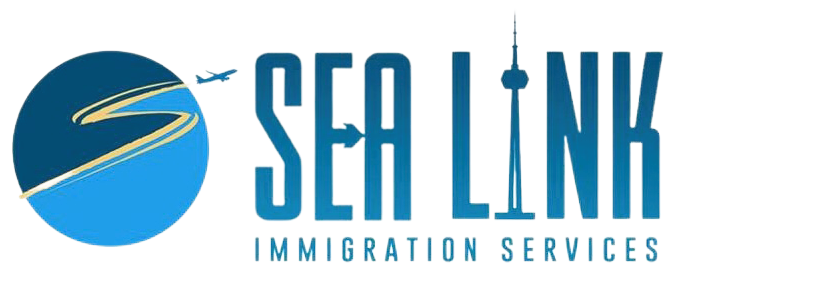Canada is a top destination for individuals seeking a new life, thanks to its high quality of living, excellent healthcare and education systems, and multicultural society. One of the most coveted ways to settle in Canada is by obtaining Permanent Residency (PR). This blog provides a comprehensive guide on how to secure direct PR in Canada, detailing the steps, eligibility criteria, and strategies to enhance your application.

Understanding Permanent Residency in Canada
Permanent Residency in Canada allows foreign nationals to live, work, and study anywhere in the country without time limitations. PR holders enjoy most of the same rights and privileges as Canadian citizens, including access to social benefits, protection under Canadian law, and the ability to apply for Canadian citizenship after a certain period. However, PR holders cannot vote or run for political office.
Eligibility Criteria for Direct PR
Canada offers several immigration programs through which you can apply for PR, each with its own set of eligibility criteria:
- Express Entry: Targets skilled workers with a point-based system.
- Provincial Nominee Program (PNP): Allows provinces and territories to nominate individuals based on their specific economic needs.
- Family Sponsorship: For those with a family member who is a Canadian citizen or PR holder.
- Business Immigration Programs: For entrepreneurs, investors, and self-employed individuals.General requirements across these programs include:
- Language Proficiency: Demonstrated through tests such as IELTS or CELPIP.
- Educational Qualifications: Assessed by Canadian standards.
- Work Experience: Relevant to the job market in Canada.
- Job Offers: Not mandatory but beneficial.
Express Entry System
The Express Entry system is the most popular route to direct PR. It manages applications for three economic immigration programs: the Federal Skilled Worker Program, the Federal Skilled Trades Program, and the Canadian Experience Class.
Comprehensive Ranking System (CRS): Applicants are scored based on factors like age, education, work experience, and language proficiency. The higher your CRS score, the better your chances of receiving an Invitation to Apply (ITA) for PR.
Calculating CRS Score: You can use the CRS calculator on the Immigration, Refugees and Citizenship Canada (IRCC) website to estimate your score.
Creating an Express Entry Profile: You need to submit an online profile and provide details about your skills and experience. Profiles remain in the pool for up to a year.
Provincial Nominee Program (PNP)
The PNP allows Canadian provinces and territories to nominate individuals who wish to immigrate to Canada and settle in a particular province. Each province has its own PNP with unique eligibility criteria and application processes. Some provinces have streams aligned with the Express Entry system, allowing for faster processing.
How PNP Works: You must first apply to the province’s PNP and, if nominated, apply for PR to the federal government.
Provinces and Requirements: Each province has specific streams targeting students, business people, skilled workers, and semi-skilled workers.
Application Process for Direct PR
Applying for PR involves several steps:
- Check Your Eligibility: Use the online tools provided by IRCC to determine your eligibility.
- Gather Documents: Essential documents include passports, language test results, educational credentials, work experience letters, and proof of funds.
- Submit Your Profile: For Express Entry, submit your profile online. For PNP, apply directly to the province.
- Receive an ITA: If your profile is selected, you will receive an ITA.
- Submit PR Application: Complete the PR application within the specified time frame, ensuring all information is accurate and complete.
- Pay Fees: Application fees must be paid online.
- Wait for Processing: Processing times vary; stay informed through the IRCC website.
Improving Your CRS Score
Here are some strategies to improve your CRS score:
- Language Tests: Achieve high scores in IELTS or CELPIP.
- Education: Obtain additional Canadian education credentials if possible.
- Work Experience: Gain more work experience in a skilled occupation.
- Job Offer: Secure a valid job offer from a Canadian employer.
- PNP Nomination: Apply for a provincial nomination to gain additional points.
Post-Application Process
Once your application is submitted, it undergoes a thorough review:
Processing Times: Vary based on program and individual circumstances. Check current processing times on the IRCC website.
Approval: If approved, you will receive a Confirmation of Permanent Residence (COPR).
Preparing for Life in Canada: Plan your move, including finding housing, understanding the healthcare system, and enrolling children in school.
Securing direct PR in Canada is a meticulous process, but with the right preparation and understanding of the steps involved, it can be a smooth journey. Stay informed, gather all necessary documents, and be mindful of deadlines to enhance your chances of success. Good luck on your path to becoming a Canadian permanent resident!
What is the minimum CRS score required?
The minimum CRS score varies with each draw. Check the latest cut-off scores on the IRCC website.
Can I apply for PR without a job offer?
Yes, a job offer is not mandatory but can significantly boost your CRS score.
How long does the PR process take?
Processing times vary; Express Entry typically takes six months from ITA to final decision.
Can I include my family in my PR application?
Yes, you can include your spouse and dependent children in your application.



